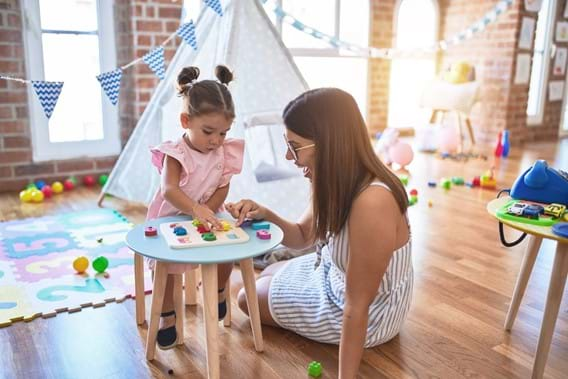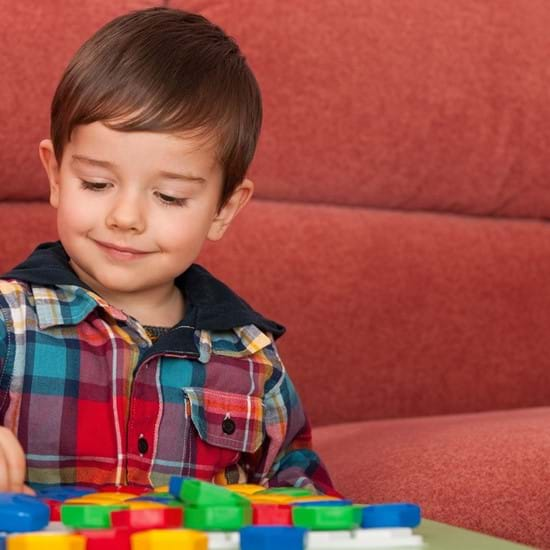
How to Improve Your Child’s Fine Motor Skills

Written by: Nanny Secours
Children’s psychomotor development first occurs through the development of gross motor skills. Babies learn to move and develop the muscles necessary to sit up then stand, which leads to walking. These are important steps, filled with adventures and discoveries, successes and repetitions, which make children proud and more and more able to explore the world around them. Fine motor skills develop in parallel, but are often mastered later on, once the child is finally able to stand freely and the hands are “released.”
Fine motor skills include all subtle and precise movements the body can execute, and more specifically hand movements.
Therefore, activities involving fine motor skills are very important because they allow children to become more and more independent through their experiences and learning. Their growing skills allow them to execute more actions on their own and develop their creativity, play skills, abilities to eat alone, dress, draw, etc. All these skills are prerequisite to school learning, especially script and writing.
What Are the Stages of Motor Development in Children?
Your children will benefit from an environment that allows them to develop their gross motor skills and dexterity from an early age so they can go through the different stages of development:
- Before 3 months old, the gestures of babies are still uncontrolled and grabbing the objects put in their hands is a reflex.
- Between 3 and 6 months old, babies start trying to grab coveted objects, progressively succeeding by “raking” their arms and fingers, and they can eventually transfer objects from one hand to the other, still approximately.
- Between 6 and 9 months old, babies acquire the pincer grasp, which allows them to hold smaller items, movements become more deliberate, and they learn to release objects, slowly mastering the “grasp-release” sequence.
- Around 1 year old, children can hold a spoon by themselves, handle objects in a more elaborate way. They can play with shape sorter toys, among others.
- Between 18 months and 2 years old, toddlers can rotate their wrist and experiment with new abilities, such as screwing/unscrewing, and they start to dissociate their thumb from the other digits, which increases hand strength.
- Between 2 and 4 years old, children experiment with script, e.g., by drawing, and learn to use a pencil.
So, it’s around 12 months old that children further improve their fine motor skills and that activities requiring these skills become interesting.
Of course, these are only guidelines; children each grow and develop in their own way and at their own pace. You might even notice some children develop their fine motor skills much earlier or even before having refined their gross motor skills!
So, How Can You Help Your Child?
Babies
- For babies, it’s a good idea to create a stimulating (but not overstimulating!) space like a playmat so they can experiment with their gross motor skills on their own before moving on to fine motor skills.
When babies are attracted to an object out of reach, they try moving to get it. Once they’ve reached the object, they try to grasp and handle it. They do this over and over, repeating the same actions to perfect their gestures.
It’s important to give babies and toddlers toys that are engaging, light up or make sounds so as to pique their interest and increase their desire to explore.
- Later on, shape sorter toys and pouring stations, for example, help children refine their gestures.
- On a daily basis, let your children explore all activities that involve the different possible movements of the fingers and hands: grabbing, pinching, patting, pointing, grasping, placing, inserting, tapping, embedding, mixing, ripping… while also varying the tools they can use (balls, paper, pencils, sand, feathers, chips, corks, cubes, Play-Doh, and also food!)
As soon as your children are interested in what’s on their plate, you can let them discover foods by themselves with their fingers or give them a spoon while you feed them with another one: this will help develop their manual skills and visual-motor skills.
Preschoolers
- Fingerplays and fingerplay songs are great games to build young children’s fine motor skills, e.g., using their thumb to try touching the tip of each finger one after another, faster and faster. You can also ask your children to touch the table with their hand, then with each finger, alternating between the thumb and the hand, the index finger and the hand, the middle finger and the hand…
- Suggest sorting games: you can make “sensory” bins filled with rice or pasta and hide different types of small objects (feathers, ribbons, marbles, pearls), then ask your child to look for them and sort them. This activity will stimulate your children’s curiosity while helping them distinguish shapes and materials with just their fingertips!
You can also put small items (buttons, pearls, cotton balls…) in front of your children and ask them to sort them, then organize them by category in boxes or plates.
- Let your children dress on their own! When you’re not too busy, give your children the time do this task alone, starting with small steps like putting on their socks or shoes. Then slowly, your children will learn how to put on other pieces of clothing and even pull up their zipper!
School-age children
From that age, all manual and creative activities help improve dexterity:
- Threading pearls or pasta: go from largest to smallest as your child succeeds.
- Cutting: this activity is often difficult and random at first but is very beneficial.
- Drawing and painting: you can start with fingerpainting to focus your children’s attention, then offer them different tools like feathers, pads, cotton wool, small sticks, then paintbrushes. For drawing, children can also start with crayons, wooden pencils, felt-tip pens…
- Crafting: let your children craft with all types of materials that are handled differently, such as paper, fabric, sponges, Blu Tack, rice, pasta, autumn leaves, cotton wool, felt, pipe cleaners, etc.
- Board games: fine motor skills are actively used in many games. For example, any card game that requires the players to hold the cards, pick them up from a table, shuffle them, or games in which players move small pawns or in which pieces are handled, balanced, etc.
In a nutshell, all activities children enjoy allow them to experiment and develop their skills.
Children each grow at their own pace, and it’s totally normal if your daughter is different from the neighbour’s kid or her friends! However, as soon as your child expresses a prolonged discomfort or severe difficulties, don’t hesitate to see a professional to evaluate the level of difficulty and get the support needed.
Perrine Mangeot
Family Coach, Psychometrician
Member of Nanny Secours


